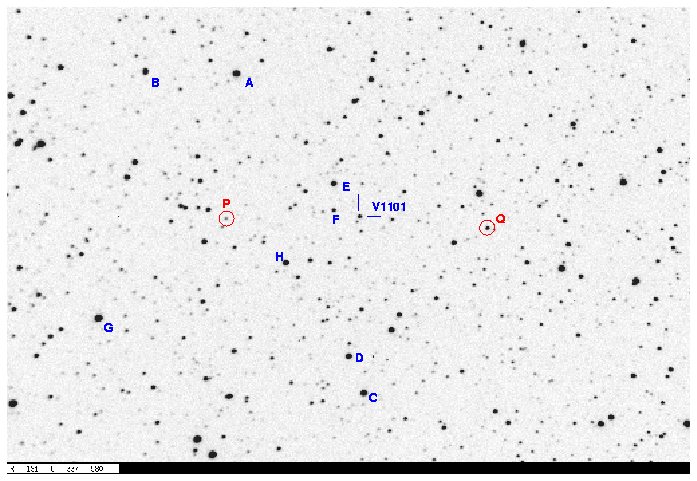
On the night of August 31/Sep01, 2004 EDT, I used the RIT Observatory's 12-inch Meade telescope and SBIG ST8 CCD camera to monitor the star V1101 Aql, a cataclysmic variable under study by the Center for Backyard Astrophysics.
The plan:
Notes from the night
Here's a chart of the field of V1101 Aql taken Aug 21, 2004. The field is about 20 arcminutes wide. Click on the picture for a larger version.
Note that
Stars P and Q are new variables, with R-band magnitudes roughly 15.7 and 13.6, respectively; see the Aug 21/22, 2004 EDT observations for their story.
I measured the instrumental magnitude of each star with aperture photometry, using a radius of 4 pixels = 7.4 arcseconds, and sky defined by an annulus around each star. Following the procedures outlined by Kent Honeycutt's article on inhomogeneous ensemble photometry, I used all stars available in each image to define a reference frame, and measured each star against this frame.
Below is a graph of the scatter in differential magnitude versus magnitude. Note that the brightest stars included in the solution may be slightly saturated. I made a series of preliminary solutions and discarded stars which had large scatter due to close companions, or due to their position near the edge of the frame, etc.
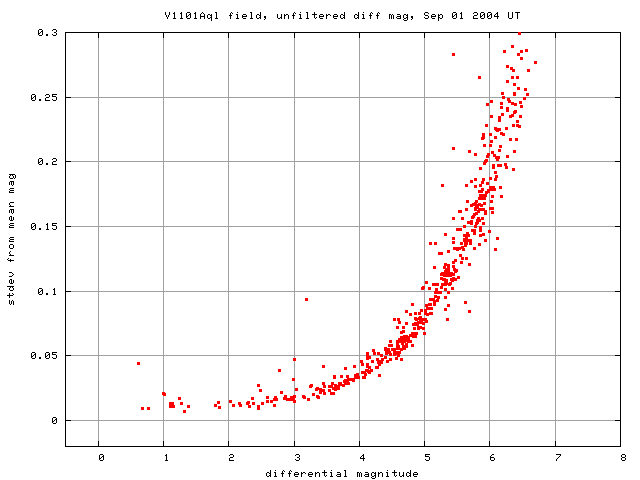
V1101 Aql does not appear outside the locus of "ordinary" stars in this plot for two reasons:
Light curves for selected stars in the field are shown below. The waviness of almost all the measurements shows the poor quality of the night. V1101 Aql, in green, is barely more variable than the others.
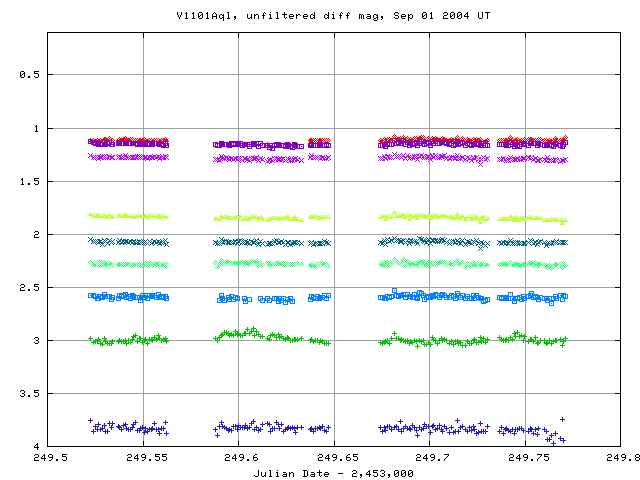
Here are light curves of the two new variable stars, P (faint) and Q (bright):
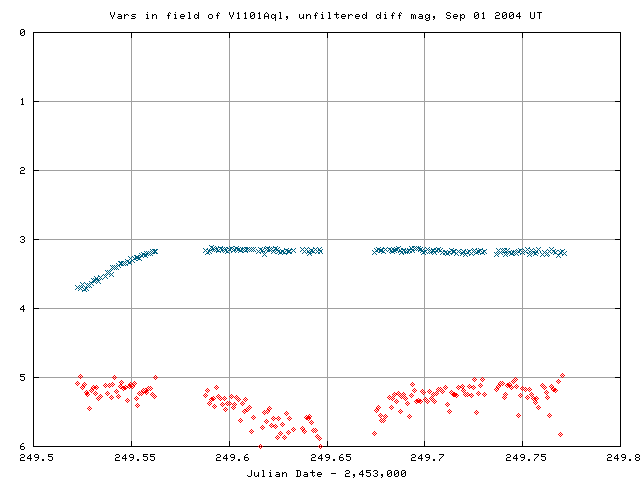
Here's a closeup of the variation in V1101 Aql itself:
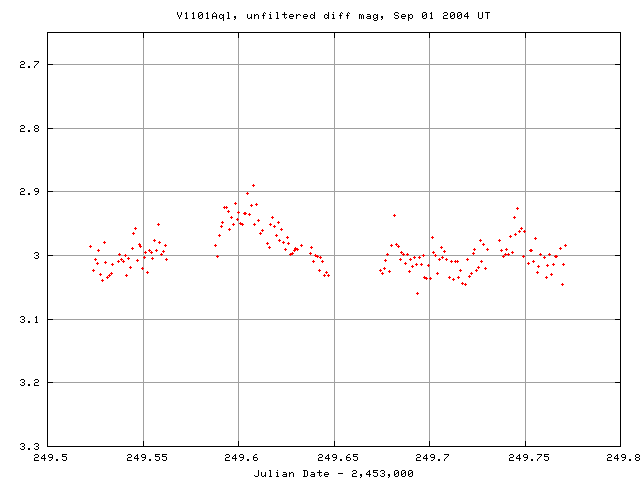
The wierd bright/faint alternation after JD 249.70 really bothers me; star "E" doesn't show the same effect. I don't know what's causing it. It's certainly not real.
I've made a table of the measurements themselves, with three different flavors of time. Here's the start of the table:
# Measurements of V1101Aql made at RIT Obs, Sep_ 1, 2004 UT, # made by Michael Richmond. # All data taken with 12-inch LX-200 + no filter + SBIG ST-8 CCD # no focal reducer, so at native f/10 # Each exposure 60 seconds long; the tabulated times are midexposure # and accurate only to +/- 1 second. # 'mag' is a differential magnitude based on ensemble photometry # tabulated value is 'mag fainter than star E = USNOA2.0 1050-16868448' # (not star A = USNOA2.0 1050-16879362 as on Aug 22 UT)' # # UT day JD-2,450,000 HJD-2,450,000 mag Sep_01.02236 3249.52236 3249.52656 0.706 Sep_01.02417 3249.52417 3249.52837 0.743 Sep_01.02508 3249.52508 3249.52928 0.727
Last modified 9/01/2004 by MWR.